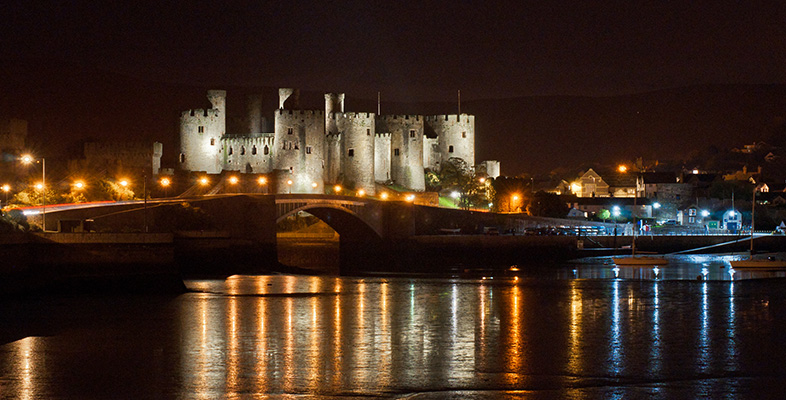2.2 Conclusion
In social research, for official purposes and in ordinary speech, Wales is often divided into distinct parts or areas, which are assumed to have differing characteristics.
These social and geographical differences provide a basis on which it can be argued that there are different kinds of Welsh people, or different kinds of Welshness, made visible in attitudes and behaviour.
However, the boundaries between these regions are not firm, or fixed, and the social map of Wales can be drawn in different ways, for different purposes.
The themes considered in this section come together in a comment made by two academics, reflecting on the continuing importance of community and language in Welsh political life, and therefore on the sort of response a movement like Cymuned, the anti-colonialist Welsh communities pressure group, can inspire. From our point of view, what is noteworthy is the way it unites elements of the physical and the social (‘land’ and ‘community’) with references to language, culture and identity, to present a statement about Wales in terms of its ‘beating heart’. Like several of the views we have explored, it also implies an argument about what it is to be truly (‘authentically’) Welsh:
In Wales, ‘heartland communities’ ... provide a powerful focus for policy initiatives developed in their name. The phrase appeals to a hierarchy of presumed cultural authenticity, distinguishing a set of favoured enclaves where the ‘heart’ of Wales beats loudest. These communities are rooted most deeply in the ‘land’ of Wales, building on a productive association between supposed national distinctiveness or identity and images of gwlad –, as in Hen Wlad Fy Nhadau, of the Welsh national anthem. Phrases like ‘Welsh-speaking communities’ or even the innocent-sounding ‘small communities’ tap into a familiar ideological seam of meaning which predisposes us to find intense cultural value in communities, often with the idea of the Welsh language embedded in this idea.
This brief survey of the social significance of some of the distinctions of place and belonging which exist within Wales suggests that rather than a single answer to the question ‘Where can one be authentically Welsh?’, or even a neatly ordered hierarchy from ‘more to less Welsh’ places, several versions of Welshness compete for space with one another. All of them are subject to change, and this makes it hard to define fixed or sharply drawn boundaries between them.
There are some major social processes at work, such as the ever-growing rate of mobility, which tend to undermine the distinctiveness of place and weaken the identity of communities. One way in which people react to these forces is to insist, sometimes more strongly than ever, on the need to protect and defend their existing communities and social relationships, and what they stand for. In Wales, we can see many examples of people defending ideas of community and identity that seem to be under threat, such as Cymuned.
During the last half century or so, Wales has witnessed some staggering social and economic changes. Yet this should not blind us to the existence of certain continuities as well. In a rare example of a return to an earlier study, researchers from Swansea have repeated some of the work done by Rosser and Harris (1965) and discovered that substantial numbers of people (59 per cent of the sample studied) continue to live the greater part of their lives in the town (Charles and Davies, 2005). Among these, it was still possible to find strong family connections and shared experiences; for example, people who had been to school together, worked together and lived in the same neighbourhoods. This high level of residential stability enabled the formation of some closeknit locally based networks. Membership of this kind of network is often felt to be a particularly Welsh characteristic and makes people feel especially Welsh. In other words, ‘community’ lives on in the experience of many Swansea people. However, undoubtedly there are also very many Welsh people who experience nothing like this degree of stability and closeness, because their lives are far more mobile and changeable. Our understanding of modern Wales has to be able to take into account both of these kinds of experience, and the contrasting perceptions of Welshness they create.
Finally, it should be noted how at various points in this section you have come up against the gap between communities as they really are, and as they are thought to be. The respondents to Cloke et al.’s (1997) rural research, for instance, who sought to regulate the type of cars, curtains or gardens their neighbours had, to conform with an idea of what a proper Welsh community should be like, are drawing lines around what they feel is acceptable in order to belong. This tells us a great deal about how they imagine their community should be, but not always much about how it actually is. After all, it is not only ‘foreign’ or English incomers who don’t feel it is necessary to go to chapel, or to avoid cleaning their cars on a Sunday; most of their Welsh neighbours feel exactly the same. The person who complained about the lack of proper Sunday observance seems to have in mind a form of Welshness appropriate to the time of the classic community studies, but which vanished long ago as a reflection of how most Welsh people actually live. A hard-won lesson of research on questions of place, community and belonging is the need to take care not to allow nostalgic or romanticised impressions of life in the past to hide the real character and quality of life found in places and communities today.
